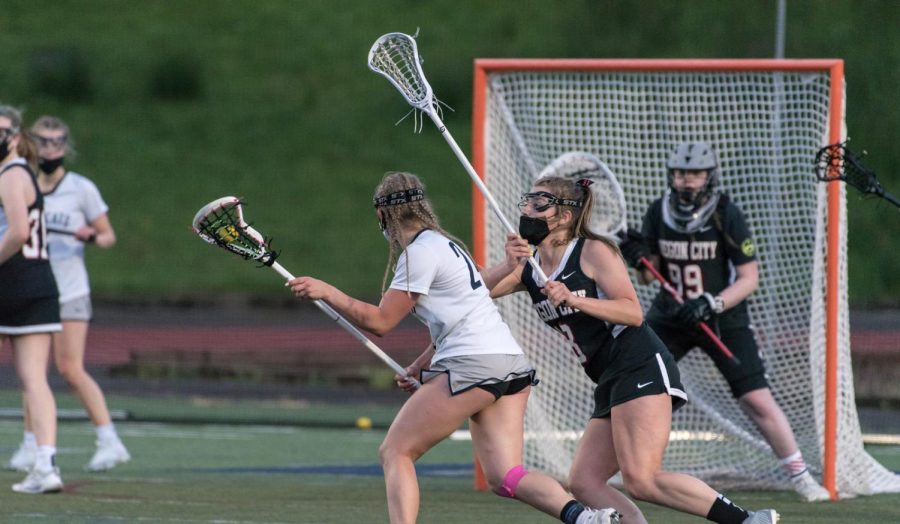What are the most common penalties?
March 3, 2022
Tatum Hagen looks to score in the Cat’s 2021 league game agaisnt the Oregon City/Clackamas mixed team. Hagen was one of the Cats’ leading scorers. In the picture, you can identify the lack of help-side defense (like there would be in a basketball game) due to the shooting space rule.
Fouls are organized into two categories: minor fouls and major fouls. While minor fouls are problematic, major fouls can prove detrimental to a team’s chances of winning. Major fouls do not always result in a card, but all mandatory yellow cards are classified as major fouls.
Devyn Ratter, a junior attacker for WVHS, has been playing lacrosse for nine years. Ratter believes the most common foul called at the high school level is shooting space.
Shooting space occurs when an attacker goes to score (i.e. winds up, looks to shoot) and there is a defender between them and the goal. When the defender is farther than a stick’s length away (about a yard), the ref blows the whistle and the attacker is given a free-position shot on the 8-meter arc. A free-position shot’s equivalent is a penalty kick in soccer, or a free-throw in basketball.
Although, it is possible to successfully defend a free-position shot. There are hashes evenly spaced out along the 8-meter, and defenders are allowed to stand at the two adjacent to where the shooter is placed.
Along with being the most common foul, Ratter also believes shooting space to be the hardest foul not to get: “A lot of times newer players, or defenders, go toward the lane of where it’s going to be, not to the person.” If you know basketball concepts, a lacrosse defender playing split-line help defense is the fastest way to get a shooting space call.
Attackers can also try to draw the foul call by pump faking once they get into a plausible shooting position.
Carly Crocker, sophomore defender for WVHS, has been playing for seven years. Crocker disagrees with Ratter; she thinks that illegal checks are more prevalent. There are multiple types of illegal checks: empty stick check, across-the-body, in the sphere, etc.
An empty stick check usually results from larger numbers crowding the ball (ex. Instead of one or two players fighting for a ground ball, there’s five.) Specifically, an empty stick check is called “when someone is going to scoop the ball, and the ball isn’t in their netting or stick yet, and someone on the other team hits their stick–that’s an illegal check. The ball has to be in the stick.”
Across-the-body and in-the-sphere checks are called when a defensive player checks towards the player with the ball when they don’t have ideal positioning–or are out-of-control.
Other common fouls might include 3-second violations within the 8-meter, playing defense with your stick horizontal, and offsides; however, shooting space and illegal checks represent a majority of a WLAX game’s penalties.
